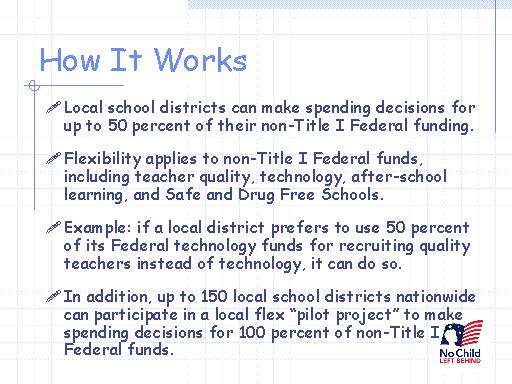
|
 |
Closing the Achievement Gap in America's Public Schools |
 |
| |

 | |
 | | 
Text (slide 43):
How It Works
- Local school districts can make spending decisions for up to 50 percent of
their non-Title I Federal funding.
- Flexibility applies to non-Title I Federal funds, including teacher quality,
technology, after-school learning, and Safe and Drug Free Schools.
- Example: if a local district prefers to use 50 percent of its Federal technology
funds for recruiting quality teachers instead of technology, it can do so.
- In addition, up to 150 local school districts nationwide can participate in
a local flex “pilot project” to make spending decisions for 100 percent
of non-Title I Federal funds.
|
|



